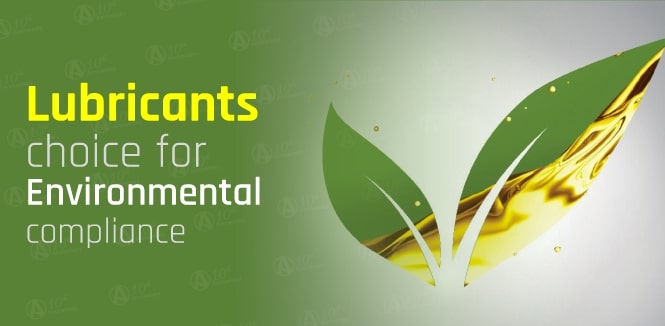- Armor Blog
- Industry
- How to Prevent Cylinder Scuffing and Wear

What is Cylinder Scuffing
Cylinder scuffing is a serious concern, and one of the major problems marine engines face. The damage from scuffing does not only decrease the efficiency of the engine, but also reduce the lifespan of the engine. But what is Cylinder Scuffing and why does it happen?
Cylinders moves in reciprocating motion at very high speeds to generate enough power to move the ship. In addition to power, this movement generate huge amount of heat and if not dispensed of from engine it can rise to a point beyond the melting point of metal at some areas.
High temperatures can cause micro welding to form on the surface of the cylinder roughening their surfaces thus make their movements harder as the resistance between the cylinder and cylinder line rises due to increased friction.
Cylinder scuffing can be easily recognised just by looking at the surface of the cylinder. There will be noticeable irregular scratches or marks on the cylinder liner.
Causes of cyliner Scuffing
Cylinder scuffing is a common problem that can arise from multiple factors. To prevent scuffing and ensure the cylinders remain intact, it is essential to pay attention to multiple and various contributing elements. Here are the most common causes for marine cylinder scuffing:
Lack of lubrication
Marine engines often operate under heavy loads, adding more pressure on the engine and its cylinders. When lubrication is insufficient, and the oil film separating the surfaces of the piston rings and cylinder liner will not be enough to overcome the friction between them.
This insufficient lubrication will cause metal surfaces to contact and rub into each other at high speeds generating more heat, therefore scuffing on the cylinders.
Abrasive wear
The problem can originate sometimes from the fuel rather than lubricants. Some types of marine fuels used today have some kinds of abrasive particles which are known as cat fines. These particles are especially present in the fuels with low sulphur content, and when they get into the engine, they prevent the lubricant film from doing its job.
Deposit build-up
Sometimes, scuffing can be present even when you are using a high-quality lubricant. Why? Because it is not enough to have a good lubricant in the lubricating system, the vital part is to have the oil to circulate in the system.
Deposits can build-up in the engines, when they can they may clog the lubricating system preventing oil from flowing partially or fully.
Aggressive Operation
In certain occasions, scuffing can be the result of aggressive operation. When engines run at high speeds, or while carrying very heavy loads the pressure on the engine increase. When the maintenance is neglected this pressure will also increase even further.
Best Practices to reduce the risk of cylinder liner scuffing
Regular Maintenance and Checkup
Marine engines require regular and constant monitoring to keep their cylinders at good shape and condition. It is important to perform a check up regularly to observe the condition of the engine parts and detect any problem before it gets serious causing any damage.
It is also vital to perform a scrape down analysis of the oil from the cylinder liner wall to ensure the lubricants are performing their job.
Optimizing feed rate
The ideal feeding rate is contingent on factors such as fuel quality, Base Number (BN) of the cylinder lube oil, engine health, and engine workload. Typically, with HJL technology, the optimal feeding rate hovers around 0.5 g/kWh. This necessitates the introduction of new cylinder oil during every engine revolution, dispersed across the liner surface as a patented spray/atomization process.
Operating Temperatures Monitoring
Heat is a major player when it comes to scuffing, so be smart and keep an open eye on the engine while it is operating. Operating on temperatures over the optimal one can increase the odds of scuffing and cause the damage to double.
Extra Steps to Prevent Cylinder Scuffing
- Prevent water entry into the liner by appropriately treating the fuel oil.
- Ensure the right cylinder oil grade is maintained.
- Supply the accurate feed rate using load-responsive lubrication system adjustments.
- Guard against moisture intake from the charge air.
- Maintain the correct jacket water temperature.
- Introduce high-quality purified fuel oil into the combustion chamber.
- Adequately upkeep the fuel injector and fuel system to ensure proper fuel atomization and injection within the chamber.
- Regularly inspect scavenge ports to promptly identify piston ring and liner surface wear.
Armor Lubricants Cylinder Oil
We can say that lubricating the engine with high-quality cylinder oil should be the first and most important step to maintain marine engine at good condition. To ensure you do, we advise you to buy from a lubricant supplier with good reputation.
Even if the have to pay little bit extra money, you will be saving a lot more since you are going to avoid spending money on costly repairs.
At Armor Lubricants, we have been manufacturign cylinder oil for marine engines for over a decade, and managed to ehance its quality and improve the performance to meet your needs and requirements. We are always more than happy to help you get the lubricant you need, so do not hesitate to contact us for any inquiry.




 Spear lubricants
Spear lubricants Armada lubricant
Armada lubricant Ace lubricants
Ace lubricants Perfect lubricants
Perfect lubricants Enzo lubricants
Enzo lubricants Lawrence lubricants
Lawrence lubricants